Each flooring has its own technical characteristics, suitable for a particular type of room. The correct choice of material depends not only on the aesthetics of the room, but also on the timing of subsequent repairs. Before purchasing a specific floor covering for your home, you need to consider its quality, features of operation.
- Classification of floor coverings by materials
- Wooden
- Under the tree
- Universal
- Rules for choosing flooring for the home
- The choice of coverage depending on the characteristics of the room
- Hallway and corridor
- Bathroom and toilet
- Hall and living room
- Kitchen
- Children's room
- Advantages and disadvantages of flooring
- Comparative characteristics
- Features of installing floor coverings with your own hands
Classification of floor coverings by materials
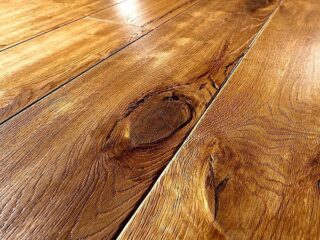
Floor finishes are made from natural or synthetic materials, so they are more often classified depending on the material of manufacture.
Wooden
Natural wood is a popular coating due to its environmental friendliness, naturalness, strength, durability. The group of these materials includes:
- Block parquet. It is a plank cut from solid wood. The elements are small in size, so they are often used for flooring in rooms of complex configuration. The parquet price depends on the uniformity of the wood texture. Cheap options contain knots or other flaws.
- Massive board. The specified coating is characterized by durability, high strength, ease of installation, and the possibility of restoration. The previous type of floor from a solid board can be restored by scraping, varnishing.
- Parquet board. This material is characterized by a multi-layer structure, with the middle layer being strictly perpendicular to the top and bottom. A veneer is glued to the base, which is made from expensive wood species. Its thickness is 4-6 mm. A protective layer is applied on top of the veneer.
The use of wood flooring often requires the treatment of elements with antiseptics.
Under the tree
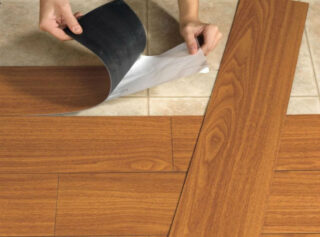
Since wood is a rather expensive material, it can be replaced with imitation, which is not inferior in quality, appearance, and durability. This group includes the following coatings:
- Laminate. The material is resistant to wear, but this quality is inherent in high-class products. Slats are laid in any residential and technical premises. It costs less than natural wood. A regular soap solution is used to care for the laminate.
- Vinyl. It is a synthetic polymer resistant to moisture, mechanical stress, temperature extremes. It can be used in rooms with high traffic. Vinyl is easy to clean as it has a smooth surface.
- Linoleum. It is a roll material that is mounted with glue or laid directly on the base, pressing with baseboards around the perimeter of the room. On average, its service life is 10 years.
An imitation wood-like finish will last for many years with proper installation and maintenance.
Universal
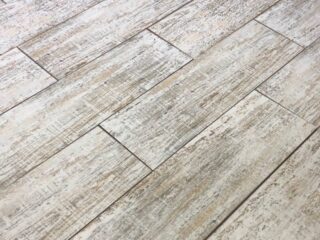
There is a group of materials with improved strength characteristics. They can be installed not only in residential premises, but also in public buildings. The following coatings are universal:
- Tile. Ceramics are resistant to increased mechanical stress, the influence of aggressive substances.Even chemical agents are used to clean it. Such a coating is safe for human health, resistant to abrasion, and retains its original color for many years. Ceramic tiles do not burn, do not conduct electricity. It can be used together with a warm floor system.
- Porcelain stoneware. This is a modern material that is characterized by a high degree of strength, resistance to mechanical damage, stress, the ability to mount on an uneven base. It contains clay, feldspar, granite chips, mica. The material can be mounted in technical unheated rooms. The only drawback is the complexity of installation due to the high density of elements.
The choice of flooring depends on the material of its manufacture, technical characteristics and conditions of its use.
Rules for choosing flooring for the home
In order for the chosen floor for the house to be practical, durable, the following factors are taken into account when buying:
- financial capabilities of the consumer;
- location of the apartment;
- the type of material from which the building was erected;
- operating conditions of the room: jumps in air temperature, high humidity levels, high mechanical stress;
- installation technology;
- the presence of small children, pets;
- features of coating care.
An equally important factor is safety for human life and health, as well as the decorativeness of the selected material.
The choice of coverage depending on the characteristics of the room
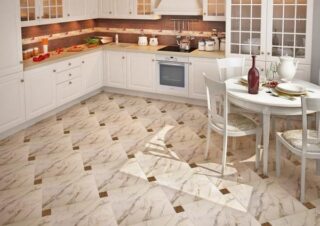
The kitchen, bathroom and living room differ in the operating conditions of the finishing material. Each of these premises requires material that meets technical requirements.
Hallway and corridor
In these rooms, the maximum level of traffic is observed, so the coating must be resistant to mechanical stress and abrasion. In this case, high-end laminate flooring, ceramic tiles, vinyl are used. If interior design allows, materials are combined.
Bathroom and toilet
The peculiarity of this part of the apartment is high humidity, local temperature difference. Vinyl and tiles do well with such a load. Often in these rooms they equip a warm floor, with which a moisture-resistant laminate can be combined.
Hall and living room
For these premises, resistance to mechanical stress and moisture, decorative coating are important. In this case, you can choose a tile, porcelain stoneware. If the rooms are small, it is better to use a coating of light shades, visually expanding the space.
Kitchen
The kitchen is the place where there is a constant risk of water and grease falling on the floor. The coating here is subject to rapid contamination, so a material that is resistant to negative influences and easy to clean is required. Vinyl, tiles and laminate flooring are allowed in this room. By combining different materials, the space in the room can be divided into zones.
Children's room
A child's room needs a safe, durable, beautiful and warm coating. Natural materials are suitable: laminated parquet, cork.
Advantages and disadvantages of flooring

The pros and cons of floor finishing depend on the material and technology of its manufacture:
- Parquet. The advantage is the possibility of laying on complex floors. It has a decorative appearance, natural, durable, safe. The disadvantage of parquet is the complexity of installation, high cost, low resistance to moisture, special care.
- Massive board. The coating is completely natural, warm to the touch, durable and hypoallergenic. It will last at least 30 years. The material provides good heat and sound insulation. However, the installation of the board requires the purchase of expensive consumables. The material needs protection from insects, inflammation, rot.
- Parquet board.It is cheaper than ordinary parquet, since only the top layer is made of valuable wood. However, the material also has good decorative properties, is easy to care for, and environmentally friendly. Its service life is about 20 years. The disadvantage is the need to use a substrate that is periodically updated.
- Laminate. Advantages: strength, durability, fire resistance, ease of installation, maintenance. The disadvantages include the need for perfect leveling of the base, deformation under the direct influence of water.
- Linoleum. The material is cheap, characterized by a variety of textures, does not need a perfect leveling of the floor, is resistant to water, fungus, insect damage. However, he is afraid of rough mechanical stress, temperature changes.
Ceramic products are strong, durable, environmentally friendly, capable of withstanding a serious load. They do not burn or conduct current. At the same time, the tile is fragile, cold to the touch, and porcelain stoneware is difficult to process.
Comparative characteristics
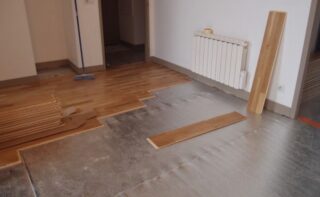
To choose the right type of coating, you need to compare the technical characteristics of the proposed options:
- environmental friendliness: only vinyl can contain toxic components;
- durability: minimum for vinyl - 10 years, maximum for solid boards and tiles - 50-60 years;
- moisture resistance: low for all wood coatings, medium for vinyl and laminate, high for tiles;
- the complexity of laying: high - tiles, block parquet, solid board; medium - parquet board, vinyl; low: laminate, linoleum.
Special products are required only for the maintenance of parquet and solid boards. It is advisable to use the minimum amount of water for cleaning the floor (except for tiles).
Features of installing floor coverings with your own hands
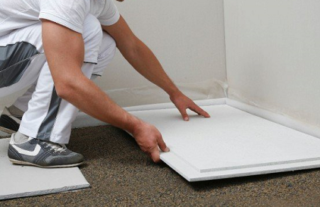
For all types of home flooring, the installation sequence is the same.
- Preparation of the base. They remove old flooring and debris. If necessary, clean the underfloor space.
- Installation of the subfloor. It can be wooden planks on logs or concrete screed. At the same time, we must not forget about the deformation gap between the wall and the base along the perimeter of the room. At the same stage, insulation and waterproofing of the structure is carried out.
- Laying the floor covering. Installation technology depends on the selected material. The laminate is placed on a substrate and fixed with locking joints. Parquet and solid planks are fixed with glue. Linoleum is set on glue or simply spread on a flat base and fixed with plinths. For the installation of porcelain stoneware and tiles, a sub-floor made of plywood is required. The elements are fixed with glue.
- Finishing finish. Required for solid boards, parquet and tiles. Wooden materials are painted or varnished. Pottery requires grouting.
Self-assembly of flooring is a responsible and difficult procedure. Compliance with technology is the key to the durability of the finish.








